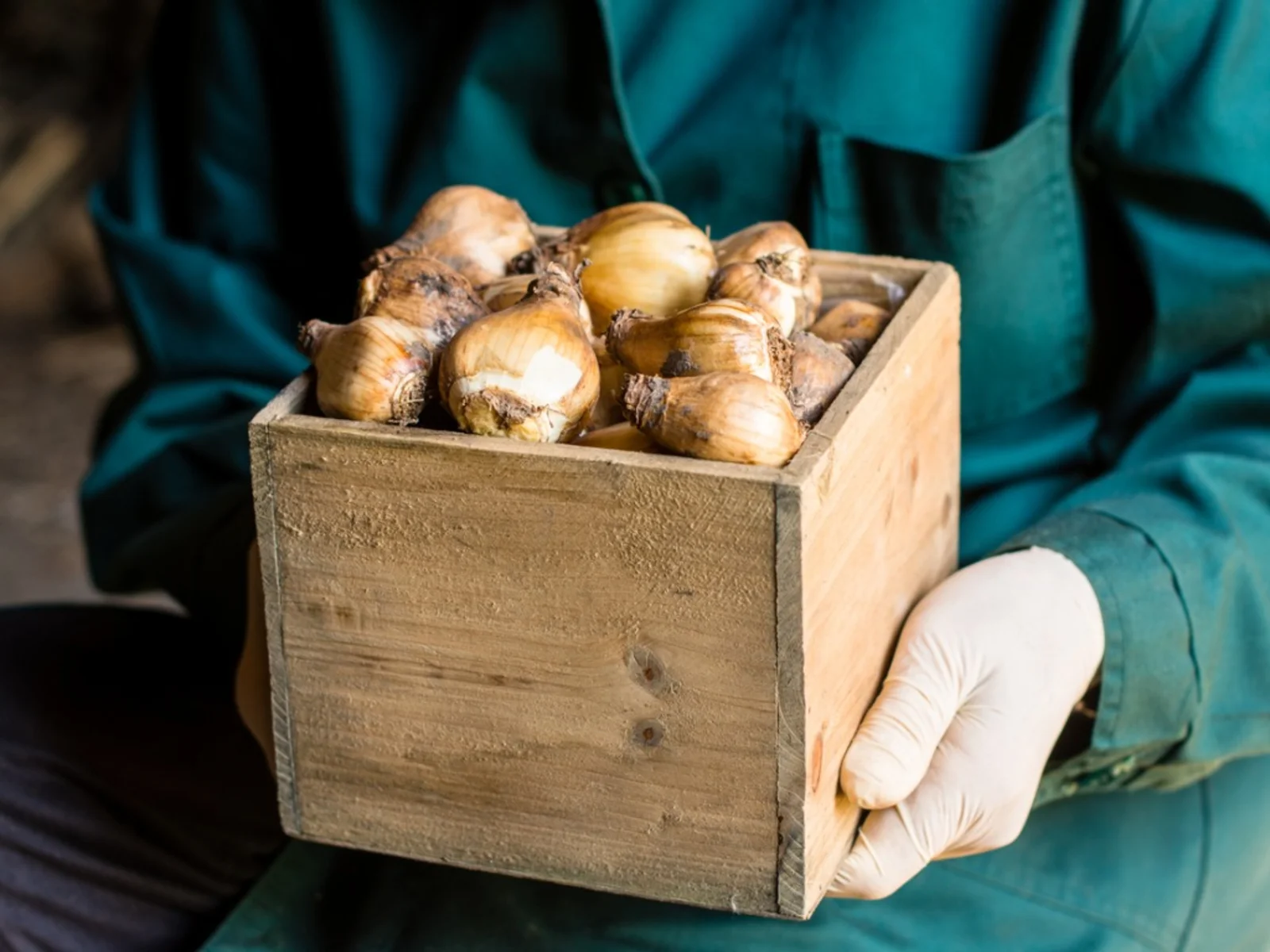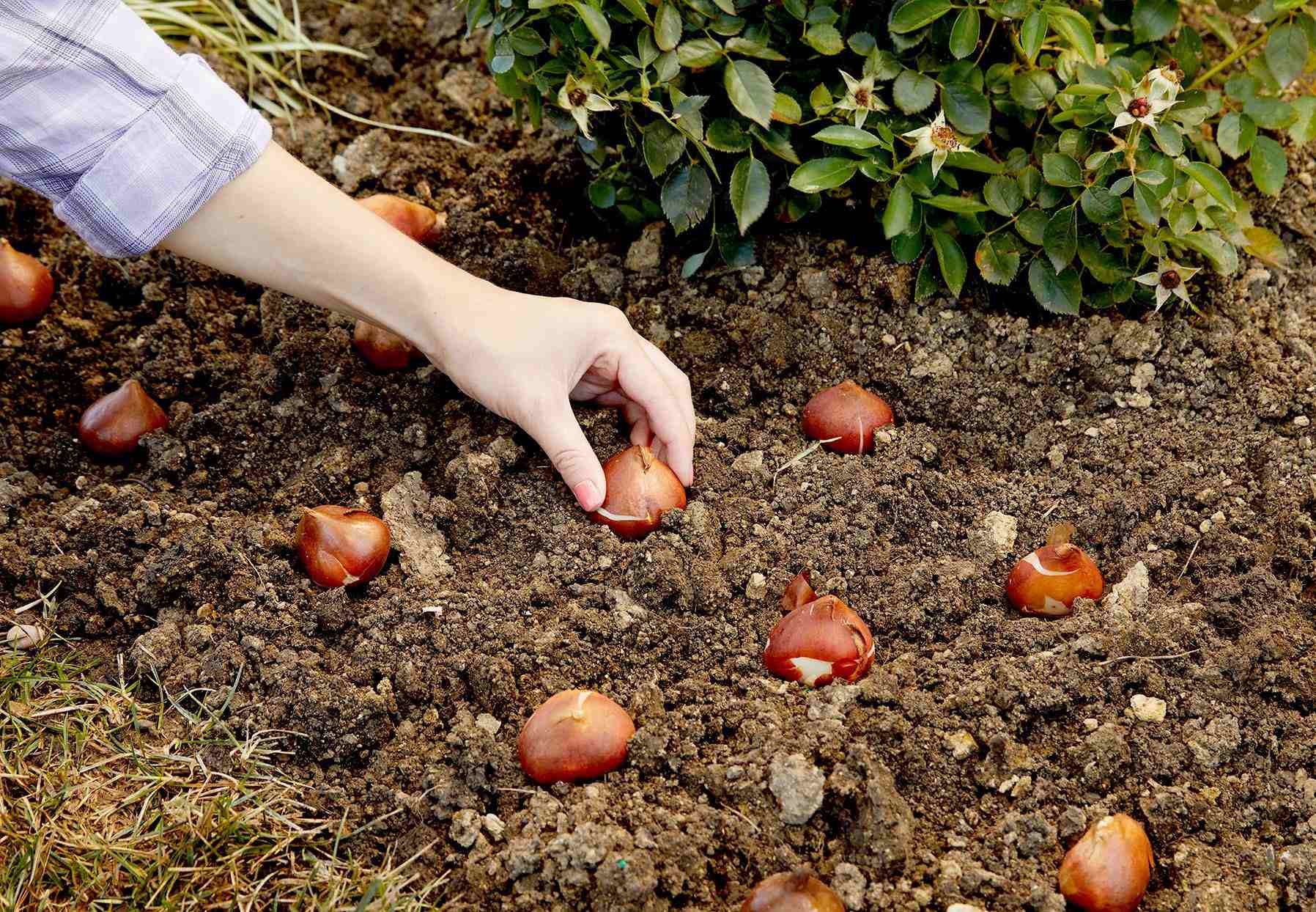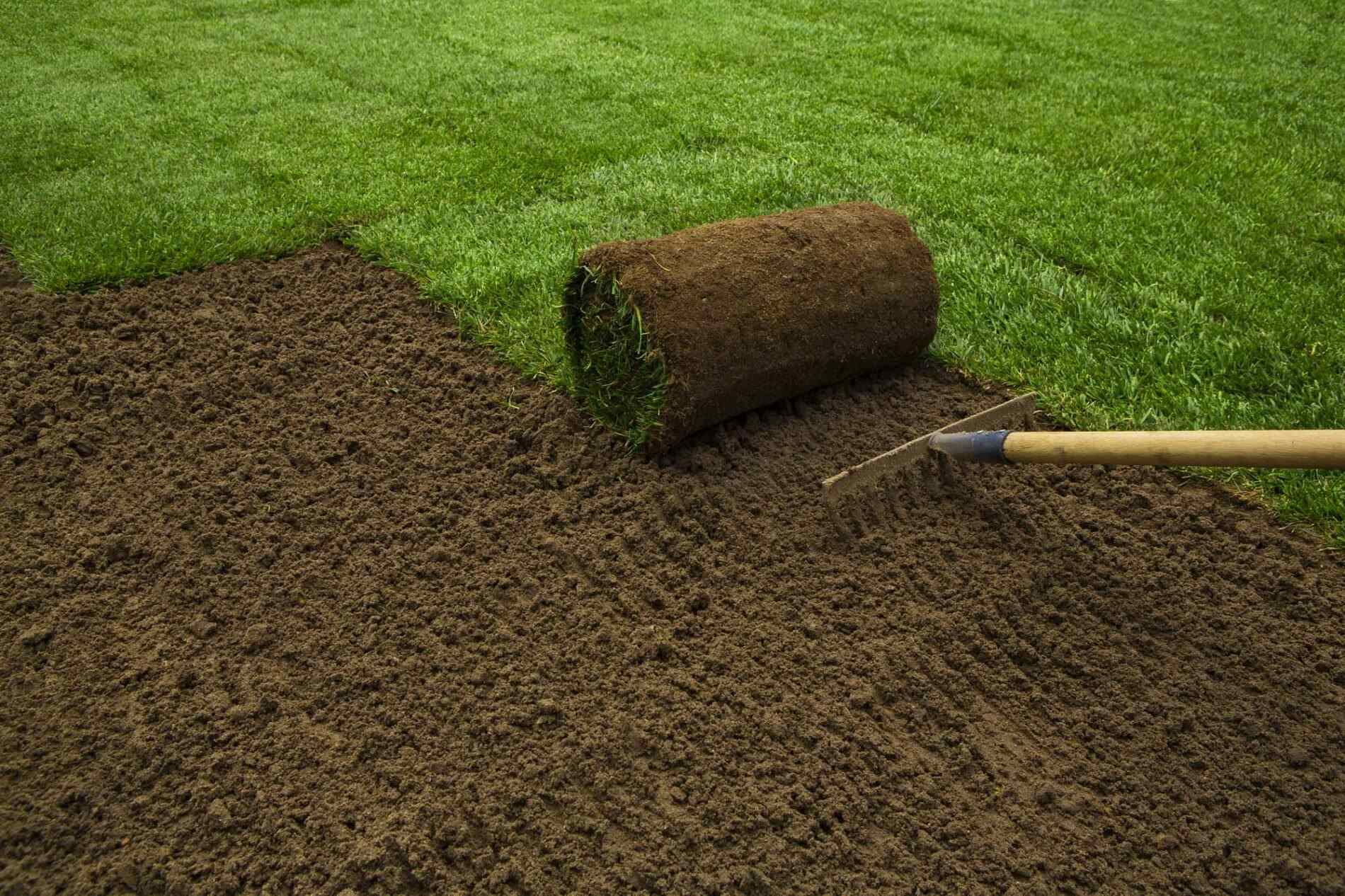Home>Types of Gardening>Ornamental Gardening>How Long Can You Store Elephant Ear Bulbs


Ornamental Gardening
How Long Can You Store Elephant Ear Bulbs
Published: January 24, 2024
Learn how long you can store elephant ear bulbs for successful ornamental gardening. Get expert tips and advice for preserving your bulbs.
(Many of the links in this article redirect to a specific reviewed product. Your purchase of these products through affiliate links helps to generate commission for Chicagolandgardening.com, at no extra cost. Learn more)
Table of Contents
- Introduction
- Understanding Elephant Ear Bulbs
- Factors Affecting Elephant Ear Bulb Storage
- Proper Storage Conditions for Elephant Ear Bulbs
- How to Prepare Elephant Ear Bulbs for Storage
- Length of Time Elephant Ear Bulbs Can be Stored
- Signs of Bulb Deterioration
- Steps to Revive Stored Elephant Ear Bulbs
- Conclusion
Introduction
Welcome to the world of ornamental gardening! If you have a love for plants and want to add an exotic touch to your garden, you’ve come to the right place. One stunning plant that can instantly elevate the aesthetics of any outdoor space is the Elephant Ear plant. Known for its large, vibrant leaves resembling the ears of an elephant, this tropical beauty is a must-have for any gardening enthusiast.
However, as with any plant, there comes a time when the growing season ends, and we need to think about storing our precious bulbs for the next season. Proper storage of elephant ear bulbs is crucial to ensure their survival and vitality. But how long can you store them? In this article, we will explore the storage options and length of time that elephant ear bulbs can be safely stored.
Before we dive into the details of bulb storage, let’s take a moment to understand the nature of elephant ear bulbs. These bulbs are actually underground storage structures that store nutrients and energy for the plant. They help the plant survive through adverse conditions, such as winter or periods of drought. Understanding this is essential for providing the right care when storing these bulbs.
Understanding Elephant Ear Bulbs
Elephant ear bulbs, also known as corms, are fascinating structures that play a vital role in the life cycle of Elephant Ear plants (Alocasia and Colocasia species). These bulbs store nutrients and water that the plant needs to survive during dormant periods. They are responsible for producing new shoots and leaves when the growing conditions are favorable.
These bulbs are typically large, fleshy structures that resemble the shape of an elephant’s ear, hence the name. They are composed of layers of modified leaves called scales, which encase the central growing point or bud. The scales serve as a protective layer and help retain moisture within the bulb.
One interesting characteristic of elephant ear bulbs is their ability to multiply. As the plant grows, it produces new bulbs or cormels at the base of the main bulb. These cormels can be separated from the parent bulb and replanted to propagate new plants.
There are several varieties of elephant ear plants, each with its unique bulb characteristics. Colocasia bulbs, for example, are usually larger and rounder in shape, while Alocasia bulbs are more elongated. Understanding the specific bulb structure of your elephant ear plant can help you provide appropriate care and storage conditions.
Elephant ear bulbs are not only fascinating but also quite resilient. They can survive harsh conditions and remain dormant for extended periods. This ability makes them ideal for storage during the off-season when the plant is not actively growing.
Now that we have a basic understanding of elephant ear bulbs, let’s explore the factors that can affect their storage and longevity.
Factors Affecting Elephant Ear Bulb Storage
When it comes to storing elephant ear bulbs, several factors can impact their longevity and overall health. Understanding these factors is crucial to ensure successful storage and the ability to revive the bulbs for future growth. Here are the key factors to consider:
- Temperature: Elephant ear bulbs are sensitive to extreme temperatures. Ideally, they should be stored in a cool, dark place where the temperature remains between 50-60 degrees Fahrenheit (10-15 degrees Celsius). Fluctuations in temperature can cause the bulbs to deteriorate, so it’s important to avoid areas that experience drastic temperature changes.
- Humidity: Elephant ear bulbs thrive in high humidity environments. If the storage area is too dry, the bulbs may dry out and become shriveled. On the other hand, excessive humidity can lead to rot. Aim for a humidity level of 60-70% to maintain the bulbs’ moisture content without promoting fungal growth.
- Air Circulation: Good air circulation is essential for bulb storage. Stagnant air can create a breeding ground for diseases and mold. Ensure that the storage area has adequate ventilation to prevent condensation and promote fresh airflow around the bulbs.
- Light Exposure: Elephant ear bulbs are sensitive to light, especially direct sunlight. Prolonged exposure to light can cause the bulbs to sprout prematurely, depleting their stored energy. Store the bulbs in a dark or dimly lit area to prevent premature growth.
- Bulb Size and Health: The size and overall health of the bulbs also play a significant role in their storage capacity. Larger, healthier bulbs tend to store more nutrients and can last longer in storage. Inspect the bulbs before storing them and discard any damaged or rotting ones.
By considering these factors and providing optimal storage conditions, you can greatly extend the lifespan of your elephant ear bulbs and ensure their viability for the next growing season. Now let’s explore the proper storage conditions for elephant ear bulbs in more detail.
Proper Storage Conditions for Elephant Ear Bulbs
To maximize the longevity and health of your elephant ear bulbs during storage, it is crucial to provide them with the right conditions. Here are the proper storage conditions to follow:
- Cool and Dark Environment: Choose a storage area that remains consistently cool, with a temperature range of 50-60 degrees Fahrenheit (10-15 degrees Celsius). This will help prevent the bulbs from drying out or sprouting prematurely. Additionally, ensure the storage area is dark or at least dimly lit, as exposure to light can trigger premature growth.
- Well-Ventilated Space: Proper air circulation is essential for maintaining the health of your bulbs. Choose a storage area that has good ventilation to prevent the buildup of excess moisture and minimize the risk of mold or fungal growth. Avoid damp or humid locations that could lead to rot.
- Proper Humidity Levels: Elephant ear bulbs thrive in high humidity environments, but excessive moisture can promote rot. Aim for a relative humidity level of 60-70% in the storage area to maintain the bulbs’ moisture content without encouraging fungal growth.
- Avoid Extreme Temperatures: Protect your bulbs from extreme temperatures. Avoid storing them in areas that experience drastic temperature fluctuations or freezing temperatures. Bulbs can tolerate some cold, but extended exposure to freezing conditions can damage them.
- Adequate Labeling: Properly label your stored bulbs to ensure easy identification. Include the variety, date of storage, and any other relevant information. This will help you keep track of your bulbs and plan their future use effectively.
It is important to note that different species or varieties of elephant ear plants may have specific storage requirements. Therefore, it is beneficial to research the specific needs of your particular plant variety or seek guidance from experienced gardeners or horticulturists.
With these proper storage conditions in place, you can ensure that your elephant ear bulbs remain in optimal condition throughout their dormant period. But how long can you store them? Read on to find out.
How to Prepare Elephant Ear Bulbs for Storage
Proper preparation of elephant ear bulbs prior to storage can greatly increase their chances of survival and successful growth when the next planting season arrives. Follow these steps to prepare your bulbs for storage:
- Cut Back Foliage: Trim back the foliage of your elephant ear plant, leaving a few inches of the stem attached to the bulb. This will help divert energy towards the bulb and prevent excessive moisture loss during storage.
- Brush Off Excess Soil: Gently remove any excess soil clinging to the bulb. You can use a soft brush or your fingers to do this. Avoid washing the bulbs as excessive moisture can promote rotting.
- Inspect and Treat for Pests: Inspect the bulbs for any signs of pests or diseases. If you notice any infestation or damage, treat the bulbs with an appropriate organic pesticide or fungicide to eliminate any potential threats.
- Dry the Bulbs: Allow the bulbs to dry naturally for a few days in a well-ventilated area. This will help reduce the risk of rot during storage. Avoid exposing the bulbs to direct sunlight during this drying period.
- Label and Store: Once the bulbs are dry, label them with the variety and the date of storage. Place the bulbs in a breathable material such as a mesh bag or paper bag. Avoid using plastic bags, as they can trap moisture and promote rot. Store the labeled bulbs in a cool, dark, and well-ventilated area with the proper storage conditions mentioned earlier.
By following these steps, you can ensure that your elephant ear bulbs are well-prepared for their dormant period in storage. Now let’s uncover how long you can store these bulbs before they start to deteriorate.
Length of Time Elephant Ear Bulbs Can be Stored
The storage duration of elephant ear bulbs can vary depending on different factors such as the bulb’s health, storage conditions, and the bulb variety. With proper care and storage, elephant ear bulbs can be stored for several months before they start to deteriorate.
On average, most elephant ear bulbs can be stored for approximately 2-4 months without any significant decline in their viability. However, it’s important to regularly check on your stored bulbs for any signs of deterioration, as individual bulbs may have varying storage capabilities.
Keep in mind that the overall health and size of the bulbs can have an impact on their storage time. Larger, healthier bulbs tend to store more nutrients and can typically last longer in storage compared to smaller, weaker bulbs.
Monitoring the bulbs during their storage period is essential to ensure their vitality. Periodically check on the stored bulbs for any signs of mold, rot, or sprouting. If you notice any deterioration or issues, it’s best to take immediate action to prevent further damage.
Remember, the goal of storing elephant ear bulbs is to preserve their energy and health during the dormant period, so they can be replanted and thrive in the next growing season. By providing the proper storage conditions and regularly inspecting your bulbs, you can extend their storage duration and increase the chances of successful growth after storage.
Now that we’ve covered the storage duration, let’s explore the signs of bulb deterioration to help you identify when it’s time to take action.
Signs of Bulb Deterioration
While elephant ear bulbs can be stored for several months, it’s important to be vigilant and watch for any signs of deterioration. Here are some common signs that indicate your bulbs may be deteriorating:
- Mold or Fungus: If you notice any fuzzy or discolored patches on the bulb or a musty smell emanating from the storage area, it may indicate the presence of mold or fungus. Mold can quickly spread and cause the bulb to rot, and should be dealt with promptly.
- Soft or Mushy Bulbs: A healthy elephant ear bulb should have a firm texture. If you notice that the bulb feels soft or mushy to the touch, it may indicate rot or decay. Soft bulbs are unlikely to survive and should be discarded.
- Sprouting: While some sprouting is normal once the bulbs are replanted, if you notice significant sprouting while the bulbs are still in storage, it may indicate that they have been exposed to light or warm temperatures. Premature sprouting can deplete the bulb’s energy reserves, reducing its viability for future growth.
- Wrinkling or Shrinking: If the bulb appears shrunken or wrinkled, it may be a sign of dehydration or nutrient depletion. This can occur if the bulb has been stored in excessively dry conditions or if it lacks sufficient moisture. Bulbs in this condition may struggle to regenerate once planted.
- Foul Odor: A foul, rotting smell coming from the storage area or the bulb itself indicates bacterial or fungal infection. This can quickly spread to other bulbs if left unchecked and should be addressed immediately.
If you notice any of these signs, it’s best to take action to prevent further deterioration. Remove any affected bulbs carefully to avoid spreading any pathogens to the healthy bulbs. Dispose of the damaged bulbs appropriately, and inspect the remaining bulbs to ensure they are in good condition. Taking prompt action can help preserve the health of your stored bulbs and increase their chances of successful growth.
With regular monitoring and attention to these signs, you can ensure that your stored elephant ear bulbs remain in the best possible condition for planting in the future. Let’s now explore the steps you can take to revive stored bulbs if they show signs of deterioration.
Steps to Revive Stored Elephant Ear Bulbs
If you discover that your stored elephant ear bulbs are showing signs of deterioration, there are steps you can take to try and revive them. Here’s what you can do:
- Inspect and Assess: Carefully examine each bulb to determine the extent of the damage. Remove any soft or rotting portions of the bulb, making sure to cut into healthy tissue.
- Soak in Water: Submerge the remaining healthy portions of the bulb in lukewarm water for several hours. This will help rehydrate the bulb and potentially revive it.
- Provide Warmth: Transfer the bulb to a warm and bright location, such as a sunny windowsill or a greenhouse. Warmth can stimulate growth and encourage the bulb to regenerate.
- Monitor Moisture: Make sure the soil or growing medium around the bulb is moist but not waterlogged. Keep a careful balance, as excessive moisture can lead to rot.
- Feed and Fertilize: Once the bulb begins to show signs of growth and produces new shoots, provide it with a balanced fertilizer to support its development. Follow the instructions on the fertilizer packaging for proper application.
- Transplant and Care: Once the bulb has revived and starts to grow, carefully transplant it into a suitable pot or garden bed with well-draining soil. Provide it with regular watering, proper sunlight, and the necessary nutrients to support its growth.
It’s important to note that not all deteriorated bulbs can be successfully revived. However, by following these steps, you can give your bulbs the best chance of recovery. Patience and diligent care are key during this process.
If the bulbs do not respond to revival efforts or show signs of further deterioration, it may be necessary to replace them with new bulbs. Learning from the experience, adjust your storage conditions for future harvests, and seek advice from local nurseries, gardening experts, or fellow gardeners for additional guidance tailored to your specific circumstances.
Now that you are armed with knowledge about reviving stored bulbs, you can confidently take action to save your elephant ear plants and enjoy the beauty they bring to your garden or indoor space.
Conclusion
Storing elephant ear bulbs is a critical part of maintaining the health and vitality of these stunning plants. By understanding the factors that affect bulb storage, providing the proper storage conditions, and taking necessary steps to revive deteriorated bulbs, you can ensure the best chances of successful growth in the next planting season.
Remember, temperature, humidity, air circulation, and light exposure are key factors to consider when storing elephant ear bulbs. Maintaining a cool, dark, and well-ventilated environment can help extend their storage duration and prevent issues such as mold or sprouting. Additionally, proper preparation of the bulbs before storage, including trimming back foliage and inspecting for pests or diseases, is essential for their survival.
While elephant ear bulbs can typically be stored for 2-4 months, individual bulbs may vary in their storage capabilities. Regular monitoring for signs of deterioration, such as mold, softness, or sprouting, is crucial to take prompt action and prevent further damage.
If your stored bulbs show signs of deterioration, there are steps you can take to revive them. Inspect, trim, soak, provide warmth, monitor moisture, and feed the bulbs to encourage regeneration. However, not all bulbs may be successfully revived, and it may be necessary to replace them.
By following these guidelines and seeking advice from experienced gardeners or horticulturists, you can enjoy the beauty and splendor of elephant ear plants year after year. Take the time to properly store and care for your bulbs, and your garden will be graced by the magnificent foliage and dramatic presence of these tropical wonders.






